Planear un viaje de esquí en [2025] no tiene que vaciar tu billetera ni estresarte. Aquí está la versión corta:
- Consejos para el presupuesto: Los boletos para remontes pueden costar $80–$200/día, alojamiento $100–$800/noche, alquileres $50–$70/día. Ahorra dinero reservando con anticipación, evitando temporadas altas, quedándote fuera de la montaña y llevando tu propia comida.
- Opciones de equipo: Snowfeet* (desde $250) son alternativas compactas y asequibles a los esquís o snowboards. Son fáciles de empacar, funcionan con botas de invierno normales y ahorran en alquiler y tarifas de equipaje.
- Viaje y alojamiento: Vuela, conduce o toma un tren según el tamaño de tu grupo y destino. Quédate más lejos de las estaciones para tarifas más baratas.
- Mejores momentos para ir: Temporada temprana (dic–ene) para ofertas, mitad de temporada (ene–feb) para la mejor nieve, o temporada tardía (mar–abr) para descuentos y sol.
Snowfeet* hace que esquiar sea más simple y barato, especialmente para principiantes o familias. ¿Listo para bajar las pistas? ¡Vamos a los detalles!
Guía asequible para planificar vacaciones de esquí y snowboard para [2025]-2026
1. Estableciendo tu presupuesto para el viaje de esquí
¿Planeando un viaje de esquí? Establecer un presupuesto realista es clave. Unas vacaciones de esquí involucran más que solo boletos para remontes: puede acumularse rápido. Para una familia de cuatro, los costos en temporada alta pueden alcanzar $2,500–$4,000, pero una planificación inteligente puede ayudar a mantener los gastos bajo control.
1.1 Gastos comunes en un viaje de esquí
Desglosemos los principales costos que probablemente enfrentarás:
Boletos para remontes
Estas suelen ser la parte más cara de tu viaje. Grandes estaciones como Vail o Aspen cobran más de $200 por día en temporada alta. Las montañas de nivel medio son más económicas, con boletos que van de $80 a $150. Para un viaje de cinco días, dos personas podrían gastar entre $800 y $2,000 solo en acceso a los remontes.
Alojamiento
Dónde te alojes hace una gran diferencia. Los alojamientos junto a la pista en lugares populares como Park City pueden costar $400–$800 por noche durante las vacaciones. Si te conformas con quedarte a 20–30 minutos, podrías encontrar habitaciones por $100–$200 por noche. Solo recuerda considerar los costos de gasolina y estacionamiento.
Alquiler de equipo
Si no tienes tu propio equipo, los alquileres pueden sumar. Los paquetes de esquí (esquís, botas y bastones) suelen costar $50–$70 por día, con configuraciones de snowboard en el mismo rango. Para un viaje de una semana, eso es $350–$490 por persona.
Comida y bebidas
Comer en la montaña no es barato. Un almuerzo básico en cafetería puede costar entre $15–$25, y las bebidas entre $8–$12. Los costos diarios de comida fácilmente pueden llegar a $100–$150 por persona, y eso antes de los gastos en après-ski o cenas especiales.
Transporte
Llegar a la montaña no es gratis. Los vuelos a destinos principales de esquí durante la temporada alta suelen costar entre $400–$800 por persona. Si conduces, no olvides la gasolina, el estacionamiento (normalmente $20–$40 por día) y posiblemente un auto de alquiler.
Clases
Si eres nuevo en el esquí o snowboard, las clases son imprescindibles. Las clases grupales cuestan $80–$120 por día, mientras que la instrucción privada puede costar entre $400–$600. Los paquetes de varios días aumentarán el total.
1.2 Consejos para ahorrar dinero
¿Quieres ahorrar algo de dinero? Aquí tienes algunas ideas:
- Reserva con anticipación: Los tickets de remontes suelen ser un 20–30% más baratos si los compras al menos una semana antes. Los precios del alojamiento también tienden a ser más bajos cuando se reservan con meses de anticipación, especialmente en fechas pico.
- Evita las horas pico: Esquiar de mediados de enero a principios de febrero (pero evita el fin de semana de MLK) puede ahorrarte un 30–50% en tickets de remontes y alojamiento.
- Alójate fuera de la montaña: Hoteles o alquileres a 15–30 minutos del resort pueden ser un 40–60% más baratos. Además, probablemente encontrarás opciones de comida más asequibles cerca.
- Lleva tu propia comida: Empacar snacks o comidas simples puede ahorrarte $50 o más por persona al día. Muchos alojamientos permiten almacenar y preparar tu propia comida.
- Opta por pases de varios días: Los descuentos en pases de tres días o más pueden ser significativos. Considera opciones como los pases Epic o Ikon si planeas varios días de esquí.
- Busca ofertas para grupos: Los grupos de 10 o más personas suelen obtener un 15–25% de descuento en los tickets de remontes y clases. Algunos lugares de trabajo también ofrecen descuentos mediante alianzas corporativas.
1.3 Cómo Snowfeet* reduce los costos
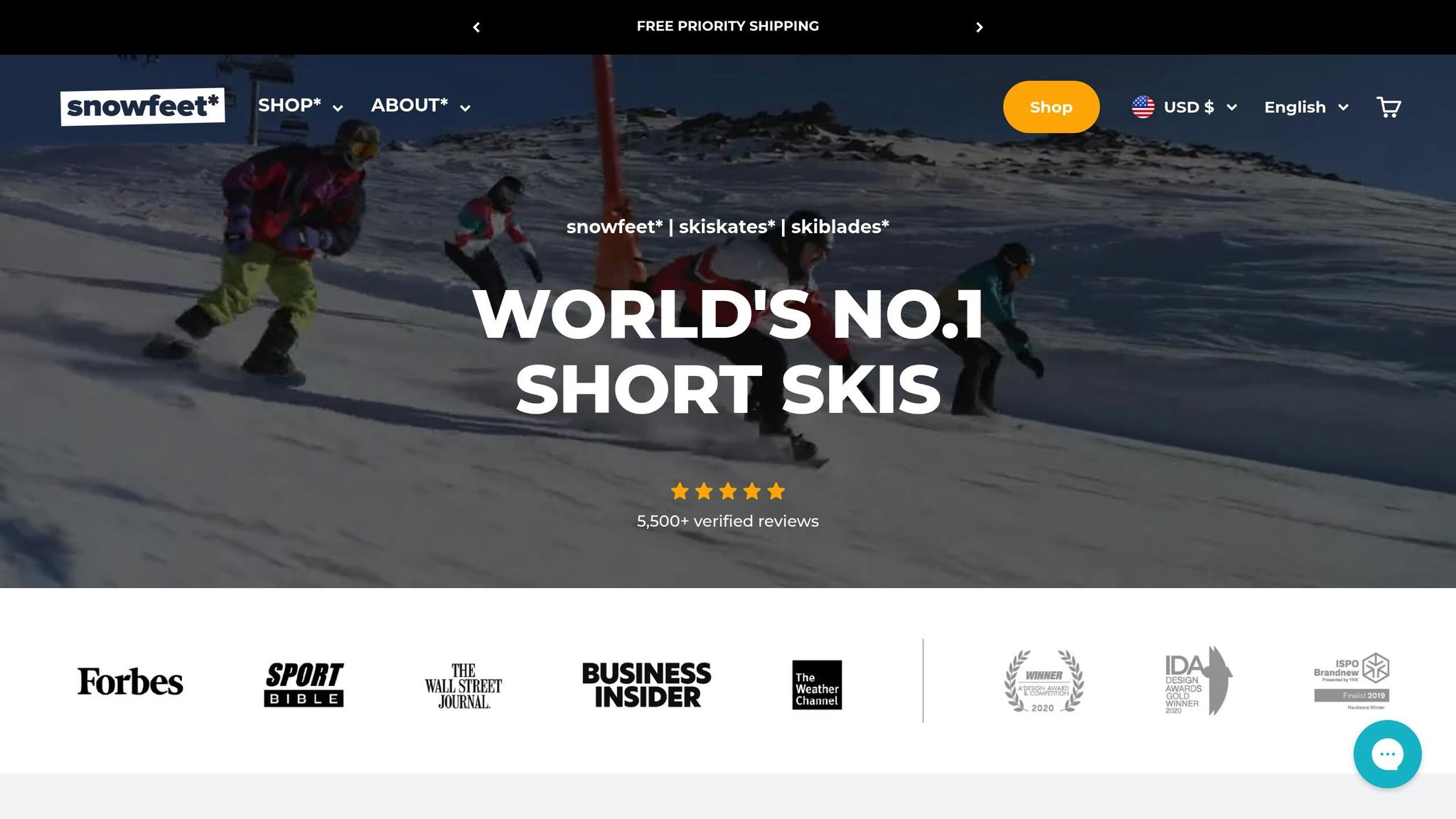
¿Buscas una forma de reducir aún más los costos? Snowfeet* podría ser tu respuesta. En lugar de alquilar esquís tradicionales o tablas de snowboard por $50–$70 al día, puedes hacer una compra única desde $250 por un par de Snowfeet* Mini Ski Skates. Después de unos cinco días de uso, ya se han pagado por sí mismos.
Para quienes quieren un rendimiento extra, Snowfeet PRO cuesta $275 y sigue siendo más barato que una semana de alquiler. Equipar a toda una familia con Snowfeet* puede costar menos que alquilar equipo tradicional para un solo viaje.
Aquí te mostramos cómo más Snowfeet* te ahorran dinero:
- Sin alquiler de botas: Snowfeet* funcionan con tus botas de invierno normales, así que puedes evitar las tarifas diarias de alquiler de botas de esquí de $20–$30.
- Sin tarifas por equipaje sobredimensionado: Los esquís tradicionales suelen generar tarifas aéreas de $75–$150 por trayecto. Snowfeet* son lo suficientemente pequeños para caber en tu equipaje o incluso en tu equipaje de mano.
- Menos clases necesarias: Su longitud más corta y centro de gravedad más bajo hacen que Snowfeet* sean más fáciles de aprender, lo que podría ahorrarte cientos en clases.
- Mantenimiento mínimo: A diferencia de los esquís tradicionales que necesitan afinación profesional, Snowfeet* solo requieren una simple aplicación de cera, que cuesta solo $6.
Para una familia de cuatro, cambiar a Snowfeet* podría ahorrar entre $800 y $1,400 en un viaje de una semana. Con el tiempo, esos ahorros se acumulan, dándote más flexibilidad y menos complicaciones para tus aventuras de esquí.
*Snowfeet*: ¡ahorrando dinero mientras mantienes la diversión en las pistas!
2. Elegir tu destino y fechas de viaje
A dónde vas y cuándo viajas puede hacer o deshacer tu viaje de esquí, tanto para tu bolsillo como para tu experiencia general. Elegir el destino correcto y planificar bien el viaje puede ayudarte a ahorrar dinero, disfrutar mejores condiciones y evitar esas molestas multitudes de temporada alta.
2.1 Principales resorts de esquí en EE.UU. para [2025]
Al elegir un resort de esquí, piensa en tu presupuesto y qué esperas del viaje. ¿Buscas una escapada lujosa o algo más económico? Estados Unidos tiene muchas opciones, desde resorts de alta gama hasta lugares más accesibles. Una vez que lo hayas reducido, decide cuándo ir. El momento puede hacer toda la diferencia para ahorrar dinero y encontrar la mejor nieve.
2.2 Mejores épocas para viajar
La temporada de esquí ofrece diferentes ventajas según cuándo vayas. La temporada temprana (de diciembre a mediados de enero) suele tener precios más bajos y menos gente. La temporada media (de finales de enero a principios de marzo) es el mejor momento para buena nieve, aunque puede costar un poco más. La temporada tardía (de marzo a abril) puede ser ideal para ofertas y cielos soleados. Para ahorrar aún más, apunta a días entre semana y evita los principales festivos y fines de semana. Así evitarás las multitudes y los precios más altos que conllevan.
2.3 Viajes multiestación con Snowfeet*
Si planeas visitar varios resorts, Snowfeet* puede cambiar las reglas del juego. Estas alternativas compactas y ligeras a los esquís o tablas tradicionales son fáciles de empacar en un equipaje de mano, ahorrándote esas costosas tarifas por equipo. Con Snowfeet*, moverse entre resorts es pan comido: sin problemas de equipaje extra, solo flexibilidad y ahorro. Perfecto para esquiadores que quieren mantener sus opciones abiertas sin gastar de más.
2. Elegir tu destino y fechas de viaje
Dónde esquías y cuándo vas puede hacer o deshacer tu viaje. Tu destino y las fechas de viaje impactan todo: tu presupuesto, la calidad de la nieve e incluso qué tan concurridas estarán las pistas.
2.1 Principales resorts de esquí en EE.UU. para [2025]
Al elegir un resort, piensa en lo que más te importa. ¿Buscas lujo o prefieres ahorrar unos cuantos dólares? Estados Unidos tiene opciones para todo tipo de esquiadores.
- Opciones asequibles: Si buscas ahorrar, echa un vistazo a lugares como Loveland en Colorado o Mt. Baker en Washington. Estos resorts ofrecen gran nieve sin arruinarte, con pases de esquí que suelen costar entre $50 y $80 por día, mucho menos que los $150–$200 que gastarías en lugares de alta gama.
- Punto medio: Resorts como Copper Mountain en Colorado o Killington en Vermont ofrecen un buen equilibrio. Obtienes comodidades sólidas, terreno variado y precios que no harán llorar a tu billetera.
- Resorts de lujo: Si estás listo para darte un gusto, Jackson Hole y Park City son opciones de primera clase. Piensa en esquí de nivel mundial combinado con comodidades de alta gama.
- Joyas ocultas: Montañas más pequeñas y locales como Bridger Bowl en Montana o Mad River Glen en Vermont valen la pena. Ofrecen un ambiente más auténtico, menos multitudes y precios más razonables.
Y no olvides planificar bien tu tiempo: cuándo vas puede ser tan importante como a dónde vas.
2.2 Mejores épocas para viajar
El tiempo lo es todo en el esquí. Cada parte de la temporada tiene sus ventajas (y sus desventajas):
- Temporada temprana (diciembre a mediados de enero): Es un gran momento para conseguir ofertas en alojamiento y pases de esquí. Además, disfrutarás de filas más cortas. ¿La desventaja? Las condiciones de nieve pueden ser variables y algunos senderos podrían no estar abiertos aún.
- Temporada alta (finales de enero a febrero): Es cuando las condiciones de nieve son las mejores y la mayoría del terreno está abierto. ¿La pega? Los precios son más altos, especialmente durante fines de semana concurridos como el Día de los Presidentes.
- Temporada tardía (marzo a abril): Esquiar en primavera ofrece días más largos, clima más cálido y grandes descuentos. Las mañanas suelen ser fantásticas, aunque la nieve puede volverse un poco blanda por la tarde.
- Días laborables: Esquiar de lunes a jueves puede ahorrarte mucho. Los pases de esquí suelen ser entre un 20 y un 40% más baratos, y evitarás las multitudes del fin de semana.
Una vez que hayas concretado tus fechas de viaje, quizás quieras considerar visitar varios resorts. Y ahí es donde entra Snowfeet*.
2.3 Viajes multiestación con Snowfeet*
¿Planeas visitar más de una estación? Snowfeet* podría ser tu arma secreta. Estas alternativas compactas a los esquís o tablas de snowboard tradicionales hacen que los viajes multiestación sean mucho más fáciles.
- Fáciles de viajar y asequibles: Snowfeet* son lo suficientemente pequeños para caber en un equipaje de mano, ahorrándote tarifas extra por equipaje. A unos $250, también pueden eliminar los costos de alquiler. Para comparar, las aerolíneas suelen cobrar $50–$100 por trayecto por equipo de esquí, y los alquileres típicamente cuestan $40–$60 por día. Los esquís tradicionales son voluminosos, usualmente de 160–180 cm de largo, mientras que Snowfeet* van desde Mini Ski Skates (38 cm) hasta Short Skis (120 cm).
- Perfectos para saltar entre múltiples estaciones: Ya sea que explores Colorado o Utah con un Epic Pass, Snowfeet* facilitan moverse entre estaciones sin la molestia de cargar con equipo voluminoso.
- Versátiles en las pistas: Snowfeet* están diseñados para todo tipo de terreno. Su longitud más corta te da mejor control en espacios reducidos, haciéndolos ideales para todo, desde pistas preparadas hasta aventuras fuera de pista cerca de lugares como Jackson Hole.
Con Snowfeet*, puedes viajar ligero, ahorrar dinero y disfrutar de más libertad para explorar.
3. Planificación de Transporte y Alojamiento
Llegar a tu destino de esquí y encontrar el lugar adecuado para alojarte puede consumir gran parte de tu presupuesto. Pero con una planificación inteligente, puedes mantener los costos bajo control y enfocarte en lo que realmente importa: disfrutar de las pistas.
3.1 Opciones de Transporte
Cómo llegues a tu destino depende de tu presupuesto, cuánto equipo llevas y qué tan lejos viajas. Aquí tienes un desglose de tus opciones:
- Volar: Si viajas lejos, volar es la opción más rápida. Solo asegúrate de revisar las tarifas de equipaje para tu equipo y planificar el transporte terrestre una vez que aterrices (como los shuttles desde el Aeropuerto Internacional de Denver).
- Conducción: Los viajes por carretera te dan flexibilidad y mucho espacio para el equipo. Además, suele ser más asequible si viajas en grupo. Solo recuerda prepararte para condiciones invernales: los neumáticos de nieve o cadenas pueden ser imprescindibles.
- Viajar en tren: Amtrak puede ser una alternativa pintoresca y relajante al avión, aunque es más lento.
- Shuttles: Los shuttles compartidos son económicos, mientras que los traslados privados ofrecen más comodidad si estás dispuesto a gastar un poco más.
Elige la opción que mejor se adapte a tu ruta, equipo y presupuesto para que el resto de la planificación de tu viaje sea más sencilla.
3.2 Encontrando alojamiento
Dónde te alojes puede tener un gran impacto en el costo total de tu viaje. Reservar con anticipación es una de las mejores formas de conseguir buenas ofertas, especialmente en épocas pico como las vacaciones. Para los períodos más concurridos, es inteligente planificar con 9–12 meses de antelación.
Aunque los alojamientos ski-in/ski-out son súper convenientes, suelen ser caros. Alojarse un poco más lejos de las pistas puede ahorrarte mucho. Aquí tienes algunas opciones para considerar:
- Hoteles: Geniales por la conveniencia y servicios como limpieza diaria.
- Alquileres vacacionales o condominios: Perfectos para familias o grupos que quieran cocinar sus propias comidas y ahorrar en restaurantes.
- Opciones económicas: Los hostales y albergues son ideales para viajeros solos o cualquiera que quiera mantener bajos los costos.
Si tu agenda lo permite, viajar en horarios de baja demanda —como a principios de enero, mediados de febrero o al final de la temporada— puede ayudarte a conseguir mejores precios.
Elegir el alojamiento adecuado puede estirar más tu presupuesto, especialmente cuando se combina con un plan de transporte inteligente.
3.3 Empacando ligero con Snowfeet*
El equipo tradicional de esquí puede ser voluminoso y complicado de transportar, pero Snowfeet* cambia las reglas del juego. Son lo suficientemente pequeños para caber en tu equipaje normal, así que puedes evitar esas molestas tarifas por equipaje extra. Si conduces, su tamaño compacto significa que no necesitarás portaequipajes en el techo, dejando más espacio en tu coche.
¿Otro beneficio? Poseer equipo portátil como Snowfeet* significa que puedes evitar las tarifas de alquiler en tu destino. Ya sea que estés saltando entre resorts o planeando un viaje rápido de fin de semana, su diseño ligero hace que viajar sea más fácil y económico. Además, son perfectos para aumentar tu movilidad dentro y fuera de las pistas.
Con el transporte y alojamiento resueltos, estás listo para simplificar tu equipo con Snowfeet*.
3. Planificación de Transporte y Alojamiento
Llegar a tu destino de esquí y encontrar el lugar adecuado para alojarte puede estirar tu presupuesto o ayudarte a ahorrar para esos tickets de telesilla y las delicias del après-ski. Un poco de planificación inteligente puede hacer toda la diferencia.
3.1 Opciones de Transporte
Tu elección de transporte depende de qué tan lejos viajes, el tamaño de tu grupo y cuánto equipo lleves. Aquí tienes un resumen rápido de las opciones principales:
- Volar: Si vas a una distancia larga, volar puede ser la forma más rápida de llegar. Solo ten en cuenta que las aerolíneas suelen cobrar extra por equipo de esquí sobredimensionado. Y no olvides que tendrás que organizar el transporte terrestre después de aterrizar.
- Conducción: Los viajes por carretera son geniales para la flexibilidad y para transportar mucho equipo, especialmente si viajas con amigos o familia. Solo prepárate para las condiciones invernales: los neumáticos de nieve o cadenas suelen ser imprescindibles en zonas montañosas.
- Viajar en tren: Rutas de Amtrak como el California Zephyr ofrecen una forma pintoresca y relajada de llegar a ciertos destinos de esquí. Sin embargo, el servicio de tren puede no llegar a todos los resorts, así que verifica bien tu destino.
- Servicios de traslado: Si no quieres conducir, los traslados pueden ser un punto medio sólido. Las opciones van desde viajes compartidos hasta traslados privados puerta a puerta, ofreciéndote una mezcla de conveniencia y ahorro.
Una vez que hayas organizado cómo llegar, es hora de enfocarte en dónde te alojarás.
3.2 Encontrando alojamiento
Tu elección de alojamiento puede tener un gran impacto en el presupuesto de tu viaje. Reservar con anticipación es clave, especialmente en épocas pico como el fin de semana del Día de los Presidentes o las vacaciones de primavera cuando las habitaciones se llenan rápido.
Los alojamientos ski-in/ski-out son súper convenientes pero suelen ser más caros. Si buscas ahorrar o tienes necesidades específicas, considera estas opciones:
- Hoteles: Una opción confiable, con servicio constante y beneficios como limpieza diaria.
- Alquileres vacacionales o condominios: Perfectos para grupos, especialmente si planeas cocinar algunas comidas y ahorrar en salir a comer.
- Opciones económicas: Hostales o alojamientos tipo lodge pueden ayudarte a reducir costos sin sacrificar comodidad.
Viajar en épocas menos concurridas también puede ayudarte a conseguir mejores ofertas en alojamiento.
3.3 Empacando ligero con Snowfeet*
Si estás cansado de cargar con equipo de esquí voluminoso, Snowfeet* podrían ser tu nuevo mejor amigo. Estas alternativas compactas y ligeras a los esquís tradicionales son fáciles de empacar y eliminan la necesidad de equipaje sobredimensionado o portaequipajes especializados.
Snowfeet* funcionan con tus zapatos de invierno normales o botas de snowboard, así que puedes evitar empacar esas pesadas botas de esquí por completo.
"Ligeros y lo suficientemente pequeños para caber en tu mochila, Snowfeet te permiten evitar la molestia de las pesadas botas de esquí y el equipo caro. Puedes llevarlos a cualquier lugar para tus aventuras de invierno."
Para viajes que involucran múltiples estaciones o escapadas de último minuto, Snowfeet* simplifican el transporte y hacen que tus opciones de alojamiento sean más flexibles. Al reducir el equipo, ahorrarás en tarifas de equipaje y disfrutarás de una experiencia de viaje más ágil. Se trata de hacer tu aventura de esquí más fácil y económica.
sbb-itb-17ade95
4. Selección de equipo: Snowfeet* vs Esquís y Snowboards estándar
Elegir el equipo adecuado puede hacer que tu tiempo en las pistas sea un éxito o un fracaso. Mientras que los esquís y snowboards tradicionales han sido la opción durante años, opciones más nuevas como Snowfeet* están cambiando las reglas del juego. Una vez que hayas organizado tu viaje y alojamiento, elegir el equipo correcto es el siguiente paso para ahorrar dinero y mejorar tu experiencia general.
4.1 Resumen del equipo de esquí requerido
El esquí tradicional viene con una lista de equipo imprescindible. Necesitarás esquís, fijaciones, botas de esquí, bastones y elementos de seguridad como cascos y gafas. El snowboard tiene su propia lista, que incluye una tabla, fijaciones y botas. Más allá del costo inicial, mantener y transportar este equipo puede sumar. Ajustes, encerado y afinado son rutina, y cargar con todo a menudo significa tarifas extra por equipaje.
4.2 ¿Por qué elegir Snowfeet*?
Snowfeet* ofrecen una alternativa ligera y simplificada a los equipos tradicionales. Están diseñados para funcionar con tus botas de invierno normales, así que no necesitas botas de esquí voluminosas. Además, su tamaño compacto significa que caben fácilmente en una maleta: adiós a las tarifas por equipaje sobredimensionado.
Desde el punto de vista del costo, Snowfeet* son una opción económica. Son menos caros al principio y pueden ahorrarte las tarifas de alquiler. Además, son más fáciles de aprender, perfectos para principiantes o esquiadores casuales. Ya sea que estés bajando las pistas a toda velocidad o simplemente jugando en la nieve, su versatilidad maneja una variedad de condiciones con facilidad.
4.3 Mantenimiento y accesorios
El equipo tradicional de esquí y snowboard requiere mantenimiento regular: encerado, ajustes de cantos y servicio profesional. Snowfeet*, en cambio, son de bajo mantenimiento. Una limpieza rápida y una revisión ocasional de las fijaciones suelen ser todo lo que necesitas.
En cuanto a accesorios, lo básico sigue igual: casco, gafas y ropa de invierno abrigada. Como Snowfeet* se usan con tus botas de invierno existentes, puedes saltarte la necesidad de calzado especializado. Su tamaño pequeño también facilita el almacenamiento, lo cual es una gran ventaja si el espacio es limitado.
4. Selección de equipo: Snowfeet* vs Esquís y Snowboards estándar
El equipo que elijas puede hacer o deshacer tu viaje de esquí, no solo en términos de diversión sino también en cuánto gastas. Los equipos tradicionales de esquí o snowboard suelen tener un precio elevado y mantenimiento constante.
Normalmente, un equipo estándar significa comprar esquís (o un snowboard), fijaciones, botas y todos los extras. Más allá del costo inicial, debes considerar el encerado regular, el afilado de cantos y reparaciones ocasionales. Y si alquilas en estaciones, esos costos pueden acumularse rápido, especialmente si vas a las pistas varias veces en una temporada.
Aquí entra Snowfeet*. Estas alternativas compactas e innovadoras revolucionan el juego. Desde $250 por Mini Ski Skates (38 cm) hasta $775 por Short Skis de 120 cm (según listado en la página de la tienda), ofrecen una opción económica. Además, están diseñados para funcionar con tus botas de invierno regulares, así que no necesitas gastar en calzado voluminoso y especializado.
La portabilidad es otra gran ventaja de Snowfeet*. A diferencia de los esquís y snowboards tradicionales, que pueden ser incómodos y caros para viajar (hola, tarifas por equipaje sobredimensionado), los productos Snowfeet* son lo suficientemente pequeños para caber en equipaje estándar. Este tamaño compacto no solo facilita el viaje, sino que también los hace súper convenientes para llevar por las pistas.
Luego está la facilidad de uso. Los esquís y snowboards tradicionales pueden tardar en dominarse, con una curva de aprendizaje que puede resultar desalentadora. Snowfeet* usa tu zancada natural, haciendo más simple aprender lo básico y ganar confianza rápidamente, incluso si eres nuevo en los deportes de invierno.
La versatilidad es otra área donde Snowfeet* brilla. Mientras que el equipo tradicional suele estar diseñado para pistas preparadas o parques de terreno, Snowfeet* maneja una variedad de condiciones de nieve. Ya sea que estés deslizándote por pendientes preparadas, disfrutando de nieve fresca o explorando senderos fuera de la estación, ellos te cubren.
Entonces, mientras planificas tu viaje de esquí para 2025, piensa en lo que Snowfeet* aporta. Costos más bajos, viajes más fáciles y una experiencia más amigable para principiantes los convierten en una opción moderna y flexible para mejorar tus aventuras de invierno.
4. Selección de equipo: Snowfeet* vs Esquís y Snowboards estándar
El equipo que elijas puede hacer que tu tiempo en las pistas sea un éxito o un fracaso, no solo por diversión sino también para tu bolsillo. Las configuraciones tradicionales de esquí o snowboard pueden ser caras y requieren mantenimiento continuo.
Una configuración típica incluye esquís (o una tabla de snowboard), fijaciones, botas y otros extras. Más allá del costo inicial, deberás presupuestar para encerados regulares, afilado de cantos y reparaciones ocasionales. ¿Alquilar equipo en resorts? Eso suma rápido, especialmente si eres un esquiador o snowboarder frecuente.
Ahora, hablemos de Snowfeet*. Estas alternativas compactas son un cambio radical. Desde $250 para Mini Ski Skates (38 cm) hasta $775 para Short Skis de 120 cm (precios de su página de tienda), son una opción más económica. Además, están diseñados para funcionar con botas de invierno normales, sin necesidad de invertir en calzado voluminoso y especializado.
¿Otra gran ventaja? La portabilidad. A diferencia de los esquís y snowboards tradicionales, que son incómodos y caros para viajar (¿tarifas por equipaje sobredimensionado?), los productos Snowfeet* son lo suficientemente pequeños para caber en tu equipaje normal. Esto los hace fáciles de llevar por las pistas y sin complicaciones para viajar.
Cuando se trata de aprender, Snowfeet* también destaca. Los esquís y snowboards tradicionales suelen tener una curva de aprendizaje pronunciada, lo que puede intimidar. Snowfeet* usa tu movimiento natural al caminar, facilitando que le tomes el ritmo y ganes confianza rápidamente, incluso para principiantes.
Y no olvidemos la versatilidad. Mientras que el equipo tradicional suele estar diseñado para condiciones específicas como pistas preparadas o parques de terreno, Snowfeet* lo maneja todo. Ya sea que deslices por pendientes preparadas, disfrutes de nieve polvo fresca o te aventures fuera de lo común, están listos para el desafío.
Al planear tu próximo viaje de invierno, considera lo que Snowfeet* aporta: menores costos, viajes más fáciles y una experiencia amigable para principiantes, perfecta para los aventureros modernos de invierno.
4.1 Resumen del equipo de esquí requerido
Preparar tu equipo de esquí no tiene por qué ser abrumador. Todo se reduce a cuatro categorías principales: calzado, equipo para deportes de invierno, equipo de protección y ropa.
Para el calzado, unas botas aislantes, impermeables y con buen soporte para el tobillo son imprescindibles. Snowfeet* lo simplifica aquí: funcionan con tus botas de invierno o de senderismo habituales, por lo que puedes evitar el gasto de botas de esquí especializadas.
Cuando se trata de equipo para deportes de invierno, las configuraciones tradicionales incluyen esquís o una tabla de snowboard, fijaciones y bastones. Snowfeet* ofrece una solución todo en uno. Los Mini Ski Skates son perfectos para principiantes, mientras que los Skiskates mejoran el rendimiento. Si buscas algo más parecido al esquí tradicional pero aún compacto, los Skiblades son una excelente opción.
No escatimes en equipo de protección. Cascos, gafas y, para principiantes, protectores de muñeca o rodilleras, son esenciales. Para la ropa, usa capas: capas base, capas intermedias aislantes y chaquetas impermeables para mantenerte cálido y seco. Ya sea que uses equipo tradicional o Snowfeet*, la seguridad y comodidad son innegociables.
¿Una gran ventaja de Snowfeet*? Evitas esas tarifas recurrentes de alquiler de equipo.
Teniendo en cuenta estos aspectos esenciales, es fácil ver por qué Snowfeet* destaca como una alternativa inteligente a los equipos tradicionales.
4.2 ¿Por qué elegir Snowfeet*?
Ahora que hemos cubierto lo básico, profundicemos en por qué Snowfeet* podría ser tu mejor opción. Así es como se comparan con el equipo tradicional de esquí y snowboard:
Portabilidad: Los esquís y snowboards tradicionales son voluminosos y difíciles de transportar. Los productos Snowfeet* son compactos y ligeros, lo que facilita su empaque y almacenamiento.
Curva de aprendizaje: Dominar el esquí tradicional a menudo requiere días de clases. Snowfeet* utiliza tu zancada natural, ayudándote a sentirte cómodo en pendientes para principiantes mucho más rápido.
Versatilidad: El equipo tradicional suele estar diseñado para condiciones específicas: pistas preparadas, nieve polvo o parques de terreno. Snowfeet* se adapta a una variedad de terrenos, desde pendientes mantenidas hasta nieve fresca e incluso senderos de excursión.
| Característica | Esquís/Snowboards tradicionales | Snowfeet* |
|---|---|---|
| Inversión inicial | Costos de equipo más altos | Diseño más asequible y todo en uno |
| Requisito de bota | Botas especializadas de esquí/snowboard | Funciona con botas de invierno normales |
| Consideraciones de viaje | Voluminoso y difícil de empacar | Compacto y ligero |
| Curva de aprendizaje | Empinado, toma varios días | Más fácil de aprender |
| Flexibilidad de terreno | Diseñado para condiciones específicas | Funciona en terrenos variados |
| Mantenimiento | Requiere mantenimiento regular | Cuidado mínimo y sencillo |
4.3 Mantenimiento y accesorios
Snowfeet* no solo es portátil y fácil de usar, sino que también es muy sencillo de mantener. En comparación con el equipo tradicional, cuidar tu equipo Snowfeet* es rápido y simple.
Después de cada salida, enjuaga cualquier sal o suciedad y deja que tu equipo se seque completamente antes de guardarlo. Aplica cera según sea necesario para mantener un deslizamiento suave.
Si partes como las correas se desgastan, los repuestos son fáciles de cambiar sin herramientas especiales. Para el almacenamiento, las bolsas compactas para equipo mantienen todo organizado y protegido durante la temporada baja.
Snowfeet* también ofrece accesorios prácticos como calcetines de invierno que absorben la humedad y guantes diseñados para un mejor agarre con bastones más cortos. Estos extras aseguran que tu equipo funcione perfectamente en conjunto.
En general, mantener tu equipo Snowfeet* en óptimas condiciones requiere un esfuerzo mínimo. Un poco de cuidado es suficiente para asegurarte de que esté listo para tu próxima aventura.
5. Consejos para un viaje de esquí sin contratiempos
Ya tienes tu presupuesto listo, tu destino soñado asegurado y tu equipo preparado para rodar. Ahora, asegurémonos de que tu viaje de esquí salga sin problemas. Un poco de preparación y flexibilidad puede hacer una gran diferencia.
5.1 Planifica con anticipación y mantente flexible
Reservar tu alojamiento con anticipación, especialmente durante la temporada alta, puede ahorrarte dinero y estrés. Además, tendrás más opciones para elegir. Si es posible, intenta viajar en días menos concurridos y no pases por alto aeropuertos pequeños y cercanos como alternativas a los principales. A menudo están menos llenos y pueden ahorrarte algunos dolores de cabeza.
Mantente atento a los pronósticos del tiempo y las condiciones de la nieve a medida que se acerca tu viaje. Si las pistas no cooperan, ten algunas actividades bajo techo preparadas: piensa en acogedoras cabañas o atracciones locales. Y no olvides comprar pases de elevación para varios días en línea antes de ir. Usualmente es más barato y te ahorra tiempo una vez que estés allí. Un poco de planificación proactiva puede ayudarte a evitar los contratiempos de viaje más comunes.
5.2 Evitando problemas comunes
Incluso con un plan sólido, los viajes de esquí pueden presentar algunos imprevistos. Los resorts de gran altitud, por ejemplo, pueden dejarte un poco agotado si vienes desde el nivel del mar. Para evitar la fatiga por altitud, considera llegar un día antes para ajustarte, beber mucha agua y tomártelo con calma el primer día.
Luego está la molestia de cargar con equipo voluminoso y lidiar con el estacionamiento lleno en los resorts. Aquí es donde Snowfeet* resulta muy útil. Su diseño compacto hace que el transporte sea muy fácil, para que puedas evitar el estrés habitual de cargar con equipo pesado y pasar directo a la diversión.
5.3 Mejores viajes con Snowfeet*
Snowfeet* elimina las complicaciones de tu viaje de esquí. Su diseño ligero y portátil es un cambio radical, facilitando el cambio entre terrenos, ya sea que estés deslizándote por pistas preparadas, explorando senderos de esquí de fondo o incluso probándolo en áreas urbanas (donde esté permitido).
Para principiantes o grupos, Snowfeet* es especialmente atractivo. Está diseñado para ser intuitivo, así que los nuevos usuarios pueden sentirse seguros más rápido que con esquís o tablas de snowboard tradicionales. Además, el mantenimiento es muy sencillo: solo enjuágalos y sécalos después de usarlos. Eso significa más tiempo disfrutando las pistas y menos tiempo preocupándote por el cuidado. Y aunque el clima no sea perfecto, Snowfeet* se adapta bien, así que no te quedarás esperando condiciones ideales.
Conclusión: Haz que tu viaje de esquí en 2025 sea inolvidable
Con un presupuesto inteligente y elecciones de equipo pensadas, estás en camino de planear una aventura invernal que sea divertida y asequible. La preparación adecuada puede marcar la diferencia entre un buen viaje y uno del que hablarás por años.
El truco está en encontrar el punto ideal entre planificar con anticipación y mantener la flexibilidad. Comienza con un presupuesto realista que cubra todo, desde los tickets de los remontes hasta las comidas, y elige destinos que se ajusten a tu estilo. Reservar temprano puede conseguirte buenas ofertas, y no subestimes cuánto pueden influir tus decisiones sobre el equipo en tu experiencia.
Toma los productos Snowfeet*, por ejemplo. Estas alternativas compactas y portátiles a los esquís y tablas de snowboard tradicionales aportan mucho. A diferencia del equipo voluminoso que está atado a resorts caros como Vail o Aspen, Snowfeet* abre un mundo de posibilidades. Piensa en senderos de esquí de fondo, colinas locales o incluso lugares urbanos donde los esquís tradicionales simplemente no funcionarían. Además, caben en equipaje normal, así que puedes evitar las tarifas por equipaje sobredimensionado y explorar alojamientos más allá de las opciones habituales de ski-in, ski-out.
Para familias y principiantes, Snowfeet* hace que esquiar sea más accesible con su diseño fácil de usar. Y dado que funcionan bien en todo tipo de clima, te ofrecen más flexibilidad para disfrutar tu viaje sin preocuparte por condiciones perfectas.
Al finalizar tus planes para 2025, recuerda que el mejor viaje de esquí es aquel que se adapta a tu estilo de vida, presupuesto y objetivos. Planea con inteligencia, empaca bien y prepárate para crear recuerdos increíbles en las pistas.
Conclusión: Haz que tu viaje de esquí en 2025 sea inolvidable
Planear tu viaje de esquí para 2025 no tiene que ser complicado ni caro. Con un presupuesto inteligente, opciones de viaje flexibles y el equipo adecuado, puedes prepararte para una aventura invernal inolvidable y sin complicaciones.
Comienza creando un presupuesto que cubra lo esencial: pases de esquí, alojamiento, comidas y transporte. Reservar con anticipación y mantener flexibilidad en tus fechas de viaje puede ayudarte a conseguir las mejores ofertas. Un poco de planificación avanzada hace que todo sea más fácil tanto dentro como fuera de las pistas.
Cuando se trata de equipo, lo que eliges puede hacer o deshacer tu viaje. El equipo de esquí tradicional puede ser voluminoso y complicado para viajar. Ahí es donde entra Snowfeet*. Estas alternativas compactas y ligeras son fáciles de empacar, ahorrándote tarifas extras de equipaje. Además, son lo suficientemente versátiles para usarse en resorts, colinas locales o incluso en zonas urbanas con nieve, dándote más libertad para explorar. Ya seas principiante o viajes con familia, su simplicidad significa más tiempo disfrutando de la nieve y menos tiempo lidiando con el equipo.
El equipo adecuado también abre más opciones de alojamiento. Con Snowfeet*, no estás limitado solo a los resorts, lo que te da la flexibilidad de quedarte en lugares que se ajusten a tu presupuesto y preferencias. Se trata de hacer tu viaje lo más agradable y libre de estrés posible.
Tu viaje de esquí en 2025 debe ser todo sobre disfrutar la alegría de los deportes de invierno: diversión, libertad y crear recuerdos para toda la vida. Con una preparación cuidadosa y Snowfeet* a tu lado, estarás listo para conquistar las pistas sin romper el banco ni lidiar con molestias innecesarias. ¡Brindemos por una aventura invernal épica!
Preguntas frecuentes
¿Cuál es la mejor manera de presupuestar un viaje de esquí en 2025 sin gastar de más?
¿Planeando un viaje de esquí para 2025? Aquí te mostramos cómo mantener tu presupuesto bajo control mientras aprovechas al máximo tu aventura. Comienza a prepararte con 6 a 8 meses de anticipación para conseguir descuentos por reserva anticipada y aprovechar precios fuera de temporada. Busca paquetes que incluyan alojamiento y pases de esquí, y considera alojarte un poco más lejos de las pistas para reducir costos. Consejo extra: viajar entre semana o en momentos menos concurridos suele ofrecer mejores precios.
Cuando se trata de equipo, echa un vistazo a productos Snowfeet como skiblades, Skiskates o mini esquís. No solo son más económicos que los esquís o tablas de snowboard tradicionales, sino que también son ligeros y fáciles de empacar, ahorrándote en alquileres y tarifas de equipaje. Para estirar aún más tu presupuesto, opta por planes de viaje flexibles y busca actividades gratuitas o de bajo costo en la zona. ¡Con un poco de planificación, puedes disfrutar de las pistas sin vaciar tu cuenta bancaria! 🎿
¿Por qué debería elegir Snowfeet* en lugar de esquís o snowboards tradicionales para mi viaje de esquí?
Snowfeet* aporta un giro fresco a los deportes de invierno, ofreciendo una alternativa elegante y moderna a los esquís o snowboards tradicionales. ¿Una de sus ventajas destacadas? Son súper ligeros y portátiles: puedes guardarlos fácilmente en una mochila, a diferencia del equipo voluminoso que la mayoría de los esquiadores cargan. Mejor aún, funcionan con botas de invierno normales, así que no necesitas gastar en calzado especializado y caro.
Estas pequeñas maravillas también son ideales para principiantes. Con Snowfeet*, aprenderás lo básico rápidamente, manejarás giros cerrados sin esfuerzo y podrás detenerte con facilidad. Su tamaño compacto facilita navegar por senderos estrechos y nieve preparada. Además, son más económicos y menos exigentes para tu cuerpo, lo que los convierte en una opción divertida y cómoda para cualquiera que tenga curiosidad por probar algo nuevo en las pistas. Si buscas conveniencia, comodidad y una forma fresca de disfrutar los deportes de invierno, Snowfeet* podría ser tu próxima favorita.
¿Cuándo es el mejor momento para planear un viaje de esquí y ahorrar dinero mientras te diviertes al máximo?
Para que tu viaje de esquí en [2025] sea más fácil para tu bolsillo, el tiempo lo es todo. Planea tu visita durante períodos de baja afluencia como de principios de enero a mediados de febrero. Evita la costosa temporada alta alrededor de Navidad, Año Nuevo y el Día de los Presidentes. Reservar tus vuelos, alojamiento y pases de esquí con 6 a 12 meses de anticipación también puede conseguirte buenas ofertas.
Piensa en ir a resorts más pequeños o menos concurridos. Estos lugares suelen tener alojamientos y pases de esquí más baratos, lo que los convierte en una gran opción para viajeros con presupuesto limitado. Si eres flexible, considera esquiar durante la temporada intermedia - finales de marzo o principios de abril. Probablemente encontrarás precios más bajos y aún disfrutarás de buena nieve. Los resorts cerca de grandes ciudades como Denver o Salt Lake City también pueden ayudar a reducir los gastos de viaje. Y para un impulso extra en el presupuesto, busca alojamientos en el valle o con autoservicio para ahorrar en comidas y hospedaje.
¿Quieres empacar ligero y ahorrar aún más? Echa un vistazo a los productos Snowfeet como skiblades o mini skis. Son compactos, fáciles de llevar y mucho menos voluminosos que los esquís o snowboards tradicionales. Perfectos para viajeros aventureros que buscan mantener las cosas simples y asequibles.







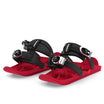
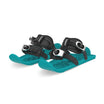












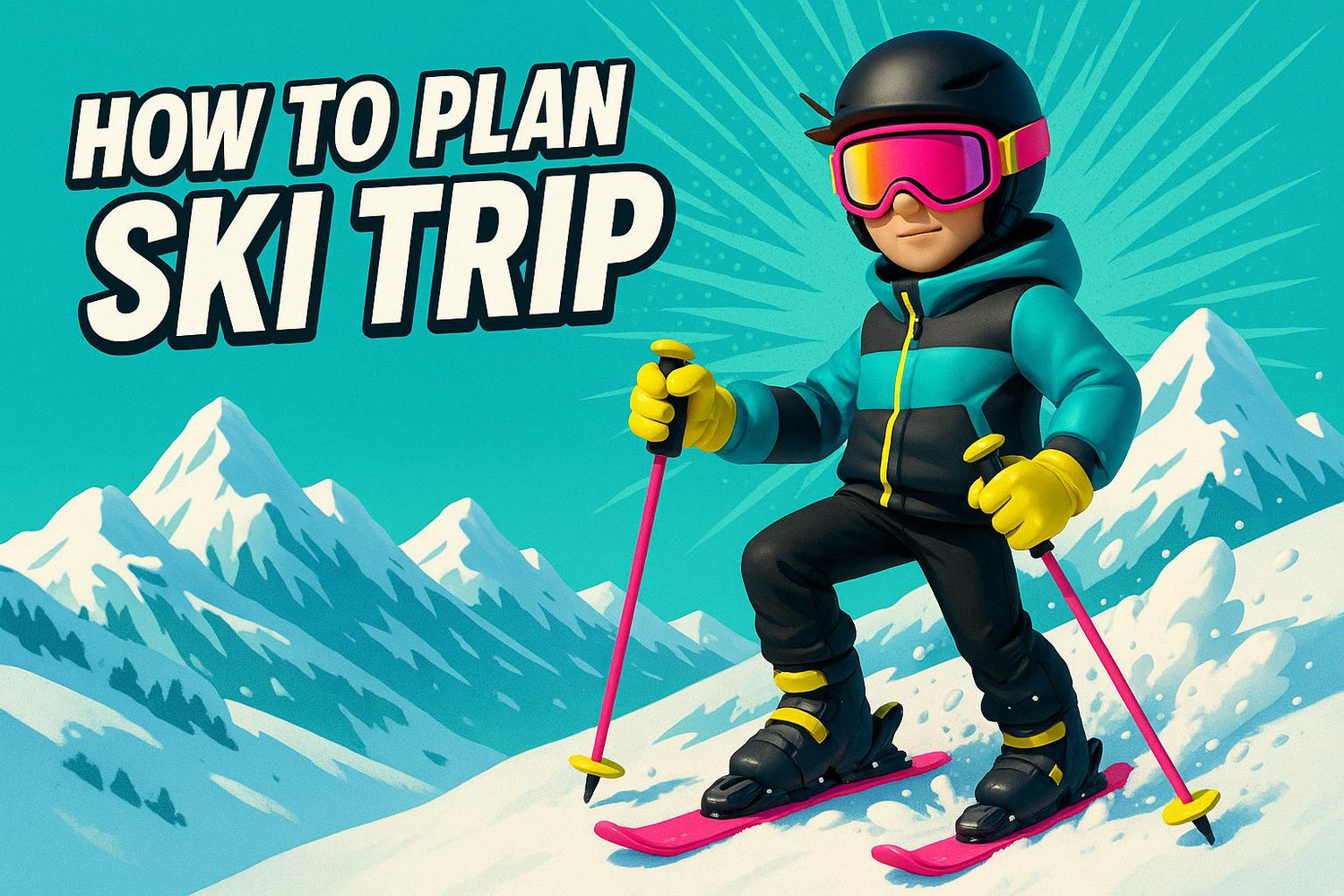
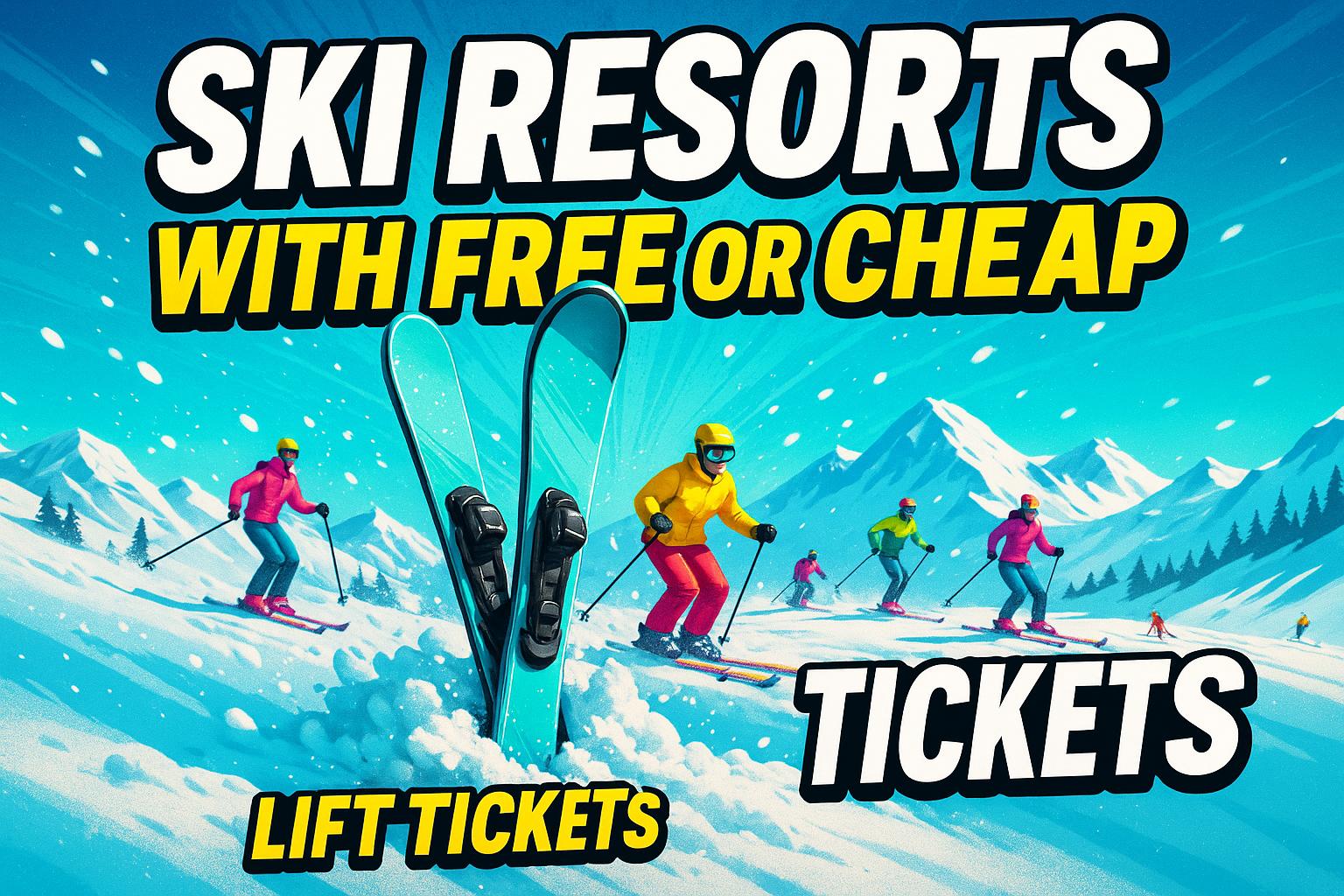
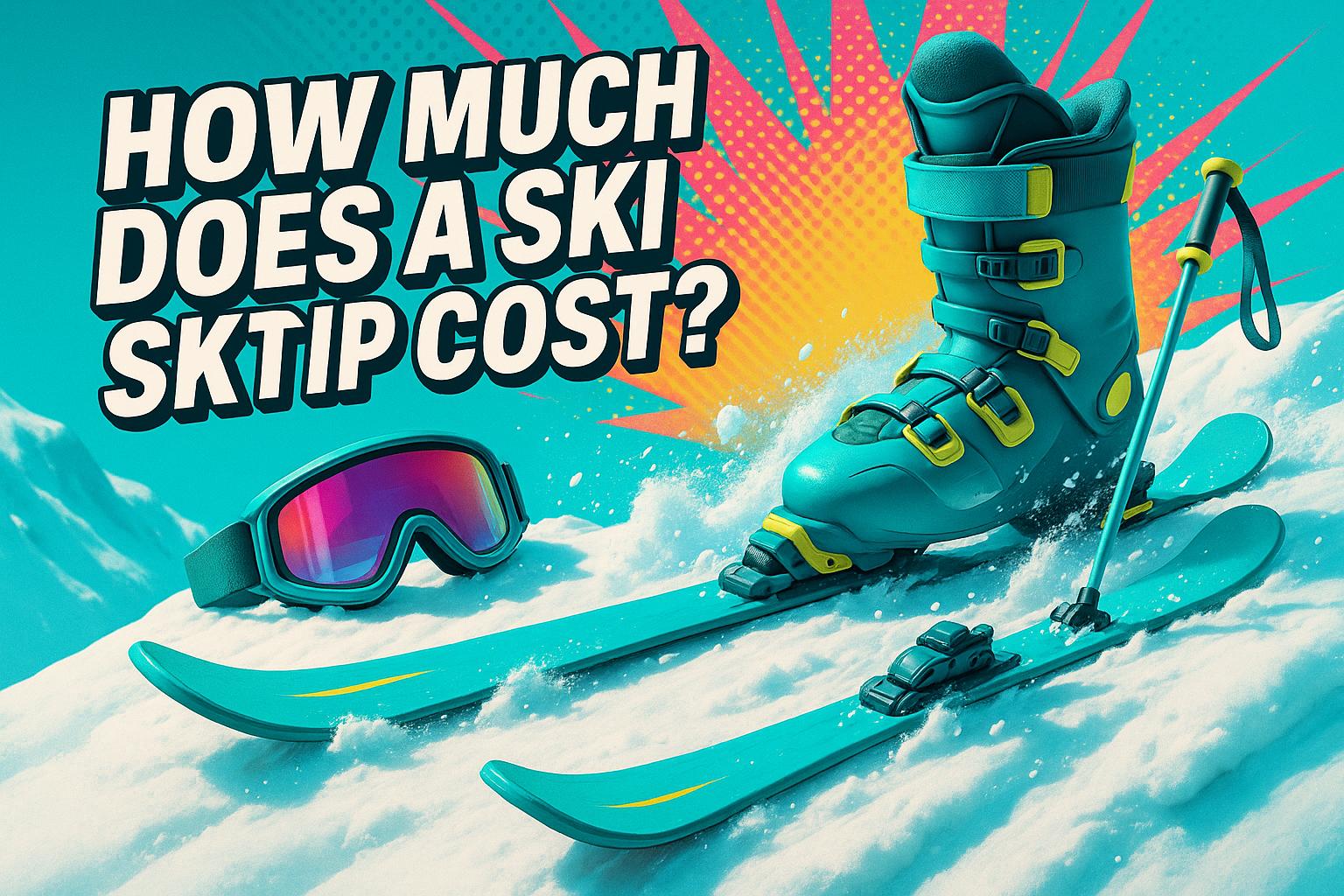




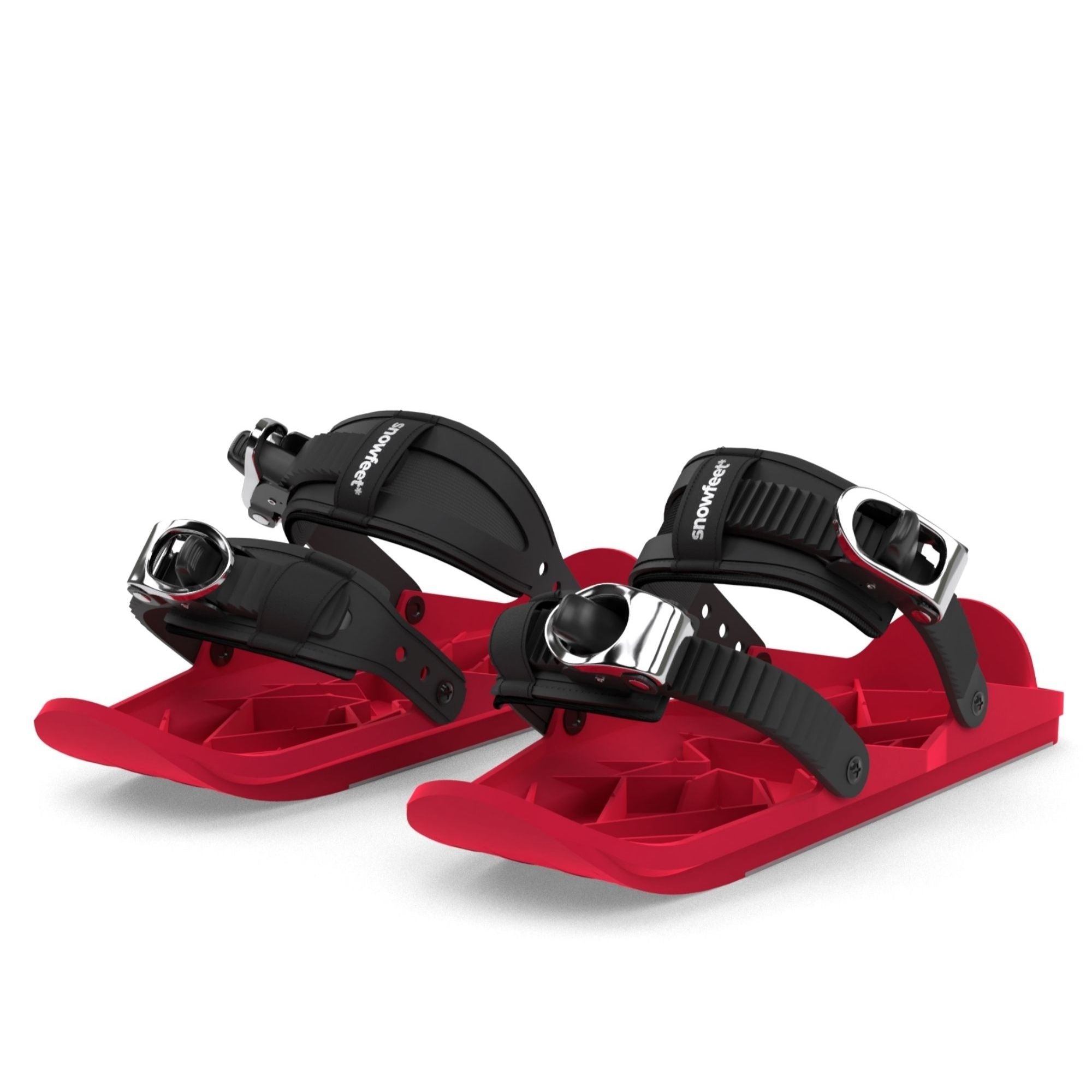
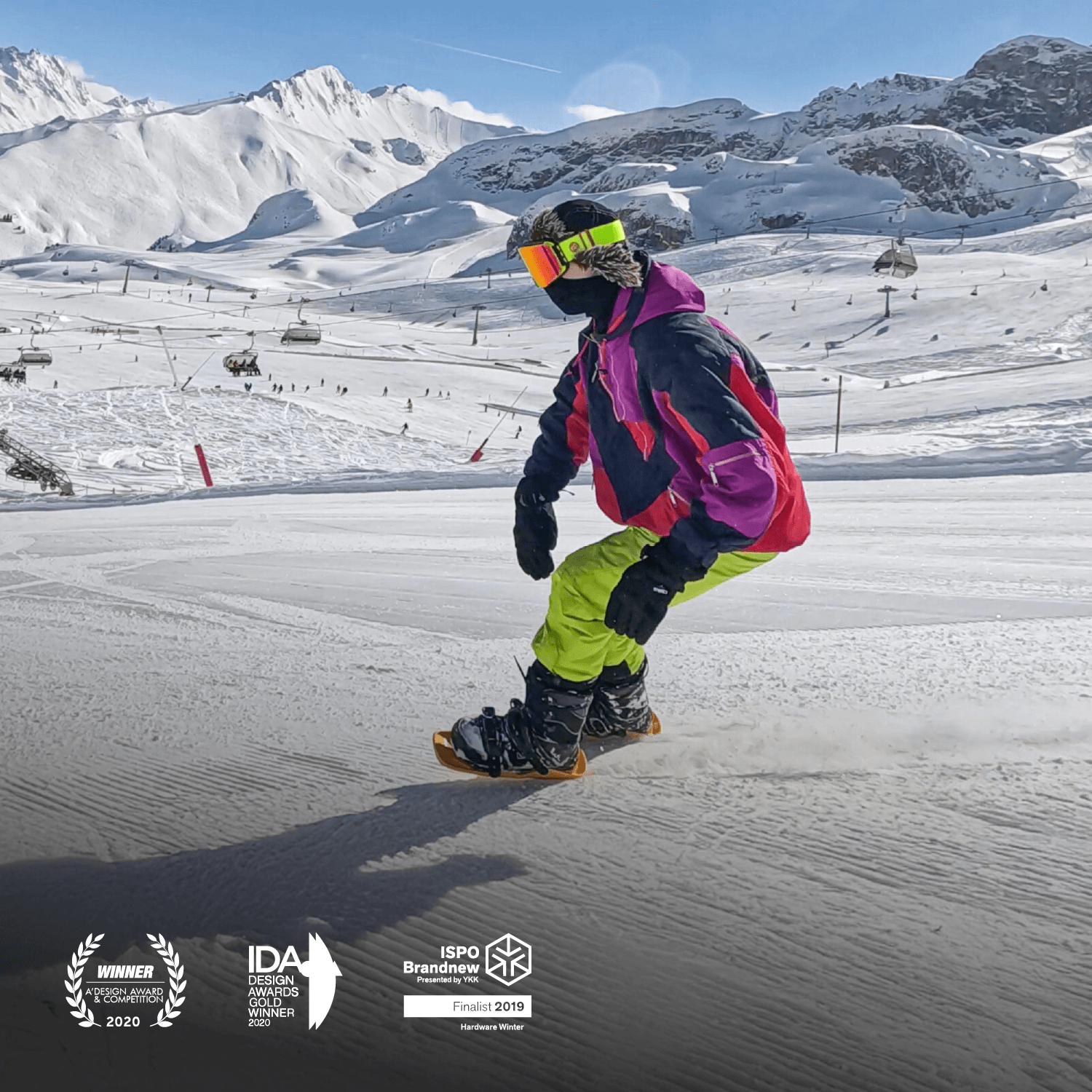




Deja un comentario
Este sitio está protegido por hCaptcha y se aplican la Política de privacidad de hCaptcha y los Términos del servicio.